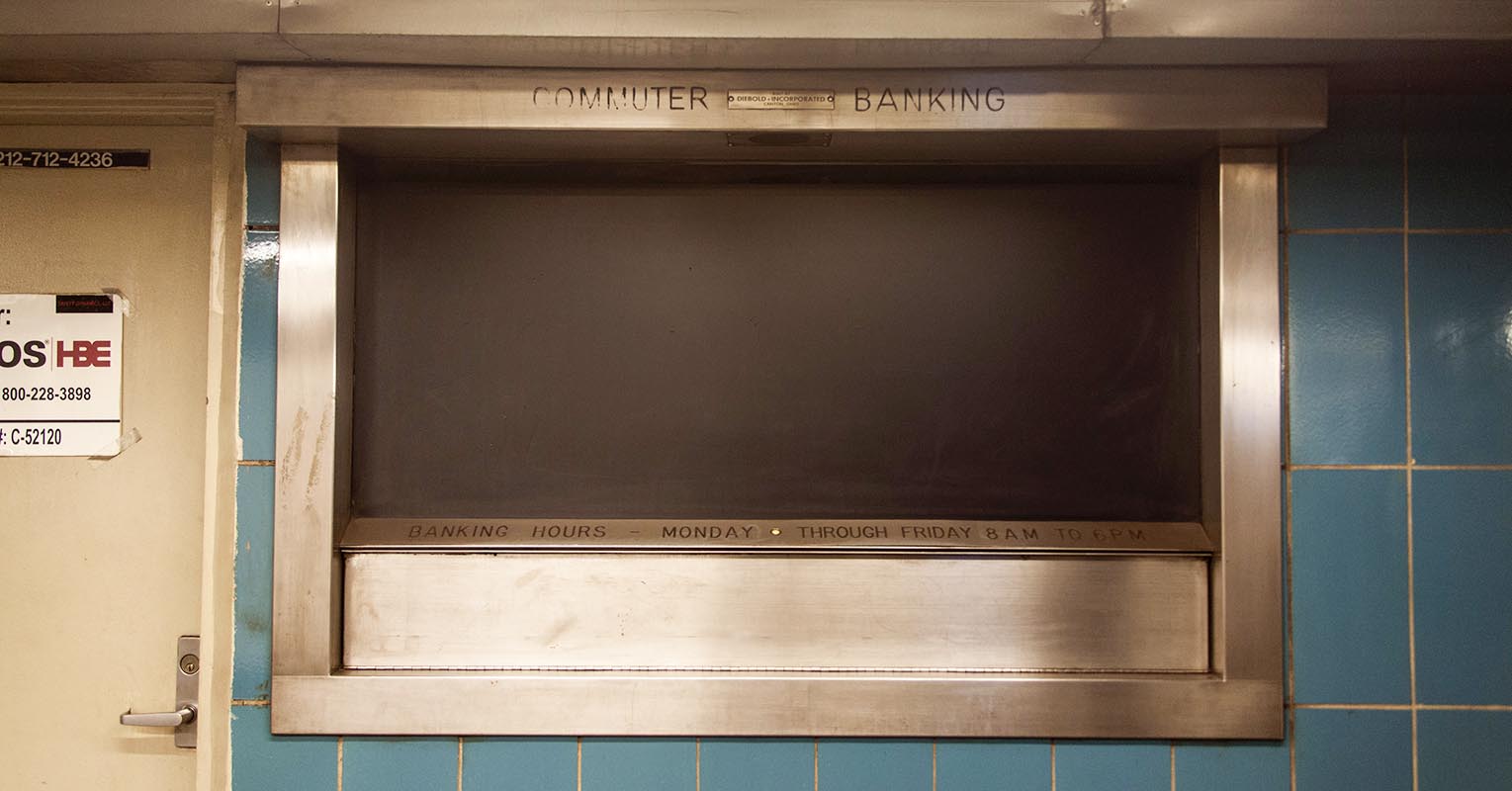Most straphangers who pass through the Brooklyn Borough Hall subway station barely notice the two darkened windows that are set within the blue tiling on the upper level of the station. But look carefully and you will see the faded words “COMMUTER BANKING” at the top. On the lower part of the window, the hours are still visible: “MONDAY THROUGH THURSDAY 8 A.M. TO 6 P.M.” as well as a small yellowed button that would have summoned the teller.
These commuter banking windows, made by Diebold Incorporated out in Ohio, were once run by the Brooklyn Savings Bank at least through the late 1960s and likely through the 1980s until the bank closed. Untapped Cities tour guide Justin Rivers who developed our Underground Subway Tour and the Subway Art tour believes that this section of the subway station was added in the early 1960s when the New York City Transit Authority was performing large capital improvements, including subway platform extensions on the former IRT line. As of 2013, when we first photographed the Commuter Banking windows, the original glass was still visible, along with a Wells Fargo security shield.
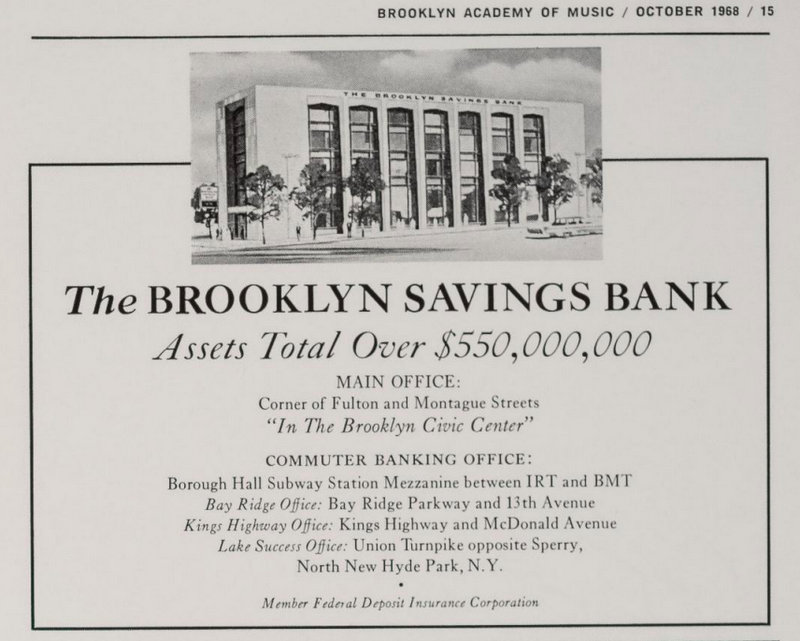 Advertisement via Brooklyn Academy of Music archives
Advertisement via Brooklyn Academy of Music archives
An advertisement taken out by the bank in a Brooklyn Academy of Music program in October 1968 lists the “COMMUTER BANKING OFFICE: Borough Hall Subway Station Mezzanine between IRT and BMT.” There is little if anything written in the press in the past or now about this helpful banking window, but the initiative was clearly part of a larger attempt by banks to make banking more convenient starting in the mid-century.
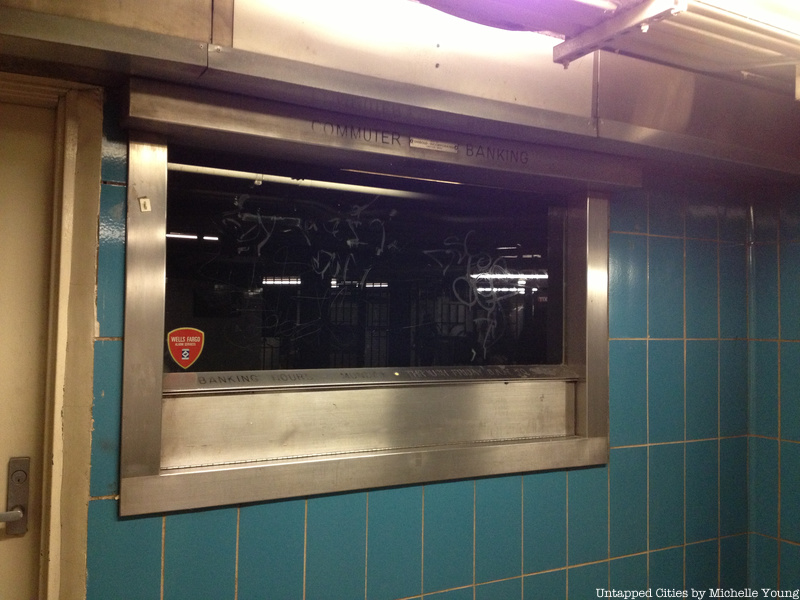 A window in 2013
A window in 2013
 The two windows today
The two windows today
In 1923, New York State passed a new banking law that allowed savings banks to open branch offices for the first time, which led to a flurry of new creative banking options. As the New York City Landmarks Preservation Commission reported, in the designation report from the Williamsburg Savings Bank, “strategically the large savings banks saw the need to locate at regional transportation nodes in order to serve commuters,” noting that the Bowery Savings Bank was the first to exhibit such transit-oriented planning by “erecting its monumental new branch opposite Grand Central Station in 1923.” But these observations were generally about standalone branch locations.

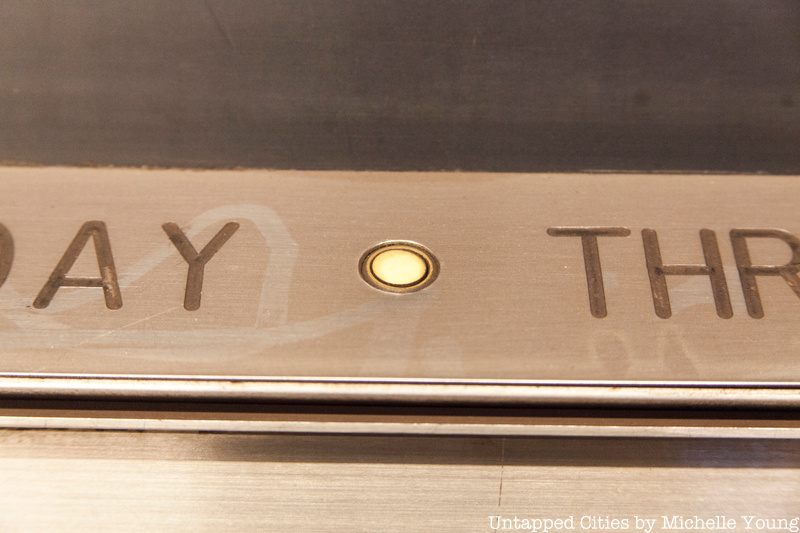
A New York Times article on March 27, 1941 reported on the first occurrence of a commuter banking branch in the United States, located in New Rochelle. Termed a “midget branch”, the 7 foot x 5 foot branch of the First National Bank of New Rochelle was located in a former shoe-shine stand in the New Rochelle train station, with a door only 3 feet high and 20 inches wide. The door was inadvertently too small for the 245-pound bank President Ernest H. Watson, and barely manageable for the cashier. The space was leased from the railroad at a “nominal price” the article reported and that “if successful, the experiment will be copied in other stations.”
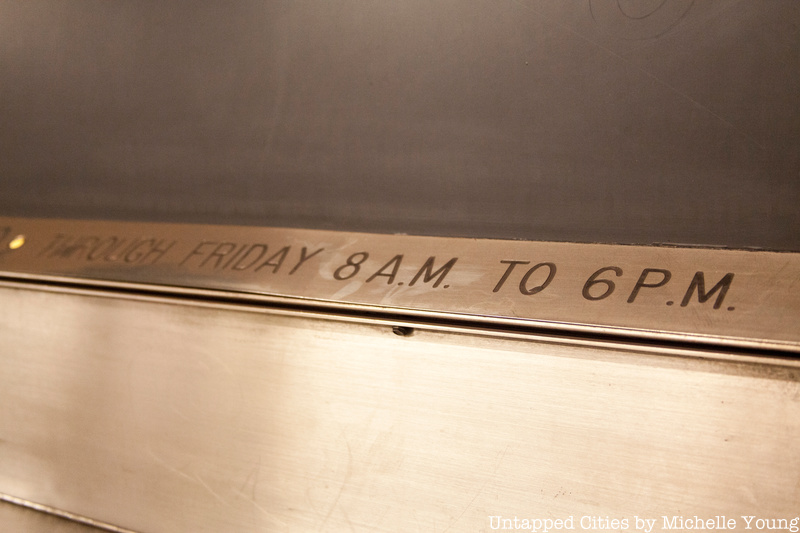
That day came on May 29, 1949, when the New York Times reported that three banks, including the First National Bank of New Rochelle, were opening commuter branches all along the New Haven Railroad line. They were built as add-ons to the station and made of red brick. The author writes, “Taking banking to the people is becoming more and more a mission in the field of banking. Step by step, many such institutions are departing from the tradition of caged and swivel-chair operation.” The author also notes the drive-in and curb-side deposit options, focused on catering to the automobile client, that had popped up.
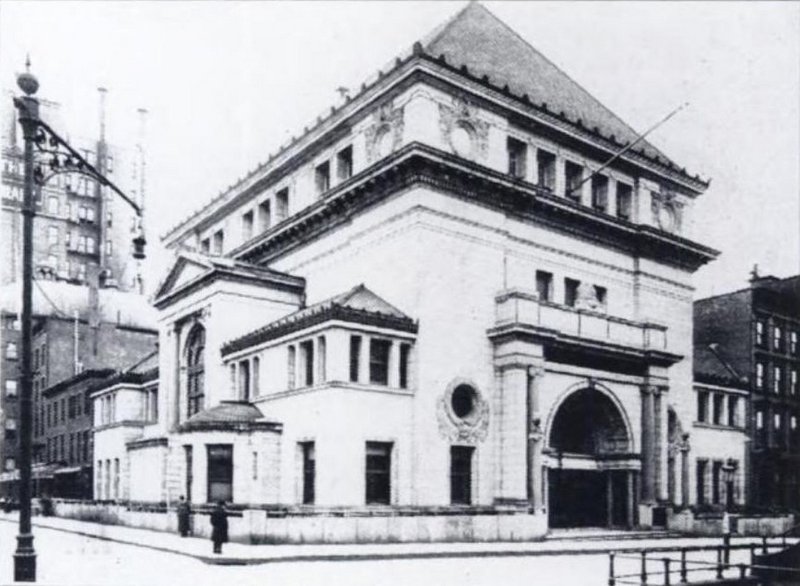 Brooklyn Savings Bank headquarters on Clinton and Pierrepont Streets in Brooklyn Heights. Photo from Wikimedia Commons.
Brooklyn Savings Bank headquarters on Clinton and Pierrepont Streets in Brooklyn Heights. Photo from Wikimedia Commons.
Back to Brooklyn, the Brooklyn Savings Bank was founded in 1827, operating in multiple headquarters over time in Brooklyn Heights. Its most architecturally notable and longest standing headquarters was at Clinton and Pierrepoint Streets, designed in a Neoclassical revival style around the time of the World’s Colombian Exhibition in Chicago. The granite for the building was quarried from Maine. The Brooklyn Savings Bank would be located here from 1894 to 1961, when it moved to Montague and Fulton Streets. Based on the design and architecture of the banking windows and surrounding tiling, it is likely that the subterranean initiative was installed around the same time the bank moved to its new location in the new “Brooklyn Civic Center” area.
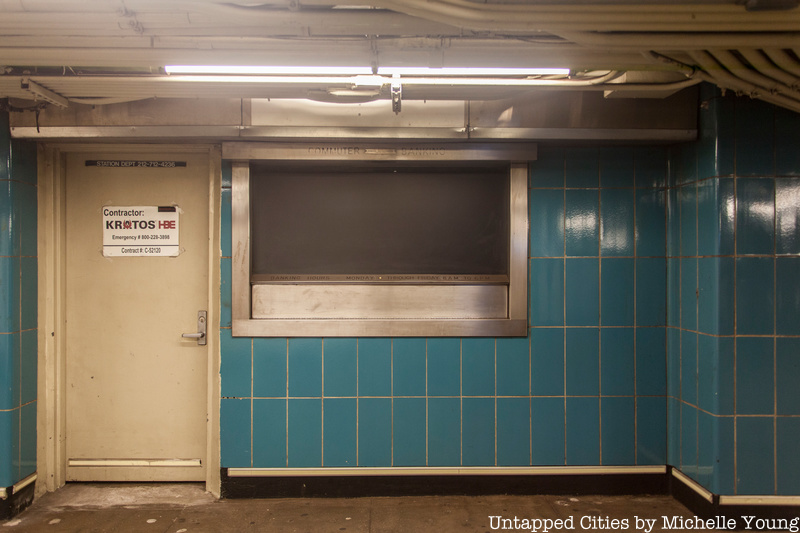
The old headquarter building was sold to Franklin National Bank, which then sold it to developers, and it met the wrecking ball thereafter. Though overshadowed by the loss of the original Penn Station, the Brooklyn Savings Bank headquarters is considered one of the city’s notable lost landmarks. The New York Times deemed it in 1964 “the first and foremost example of neoclassic architecture in Brooklyn Heights.” It was no coincidence that Brooklyn Heights was the first neighborhood to receive landmark designation under the new law in 1965. In 1990, the Brooklyn Savings Bank failed and was acquired through government funds and absorbed into a series of other banks, most recently the Savings Institute Bank and Trust Company.
Discover more secrets of the New York City subway in our upcoming Underground Tour of the NYC Subway:
Underground Tour of the NYC Subway






